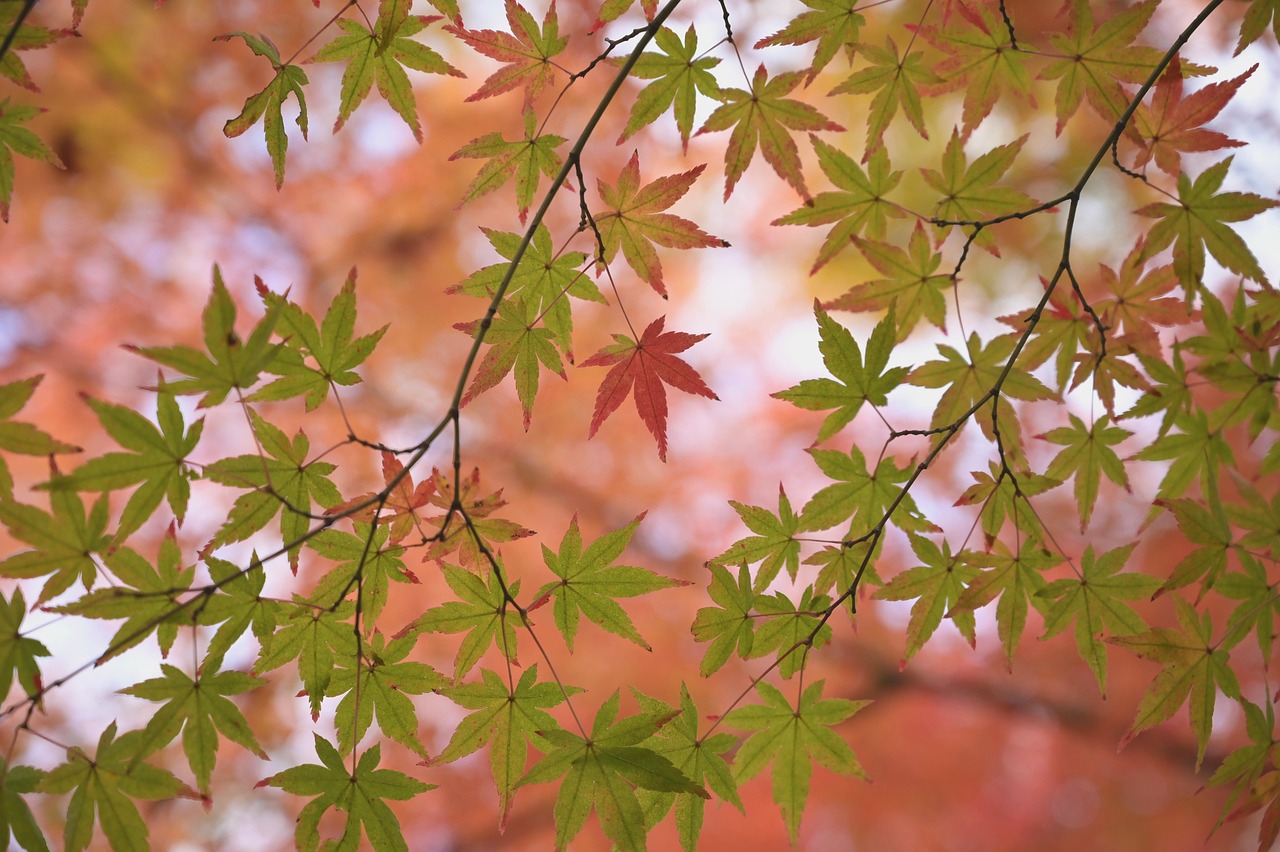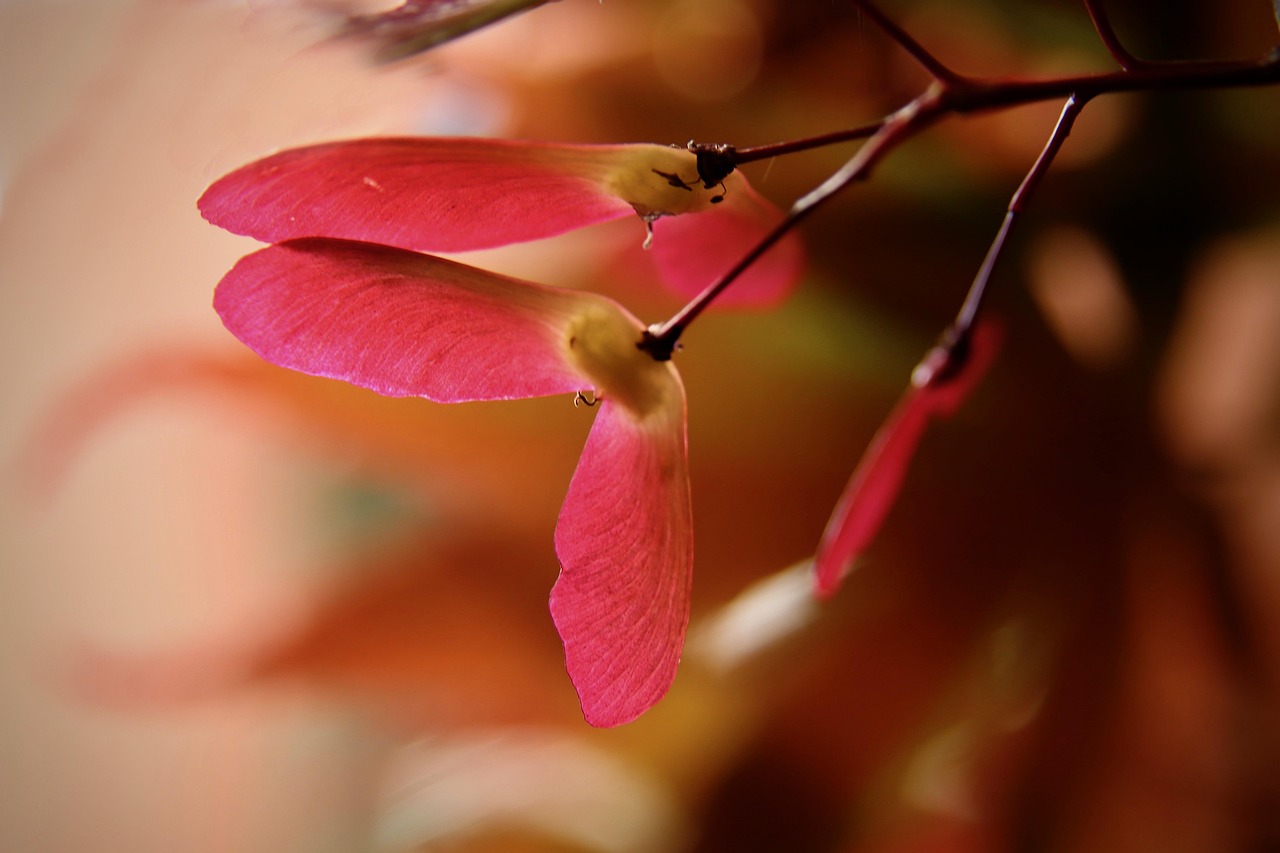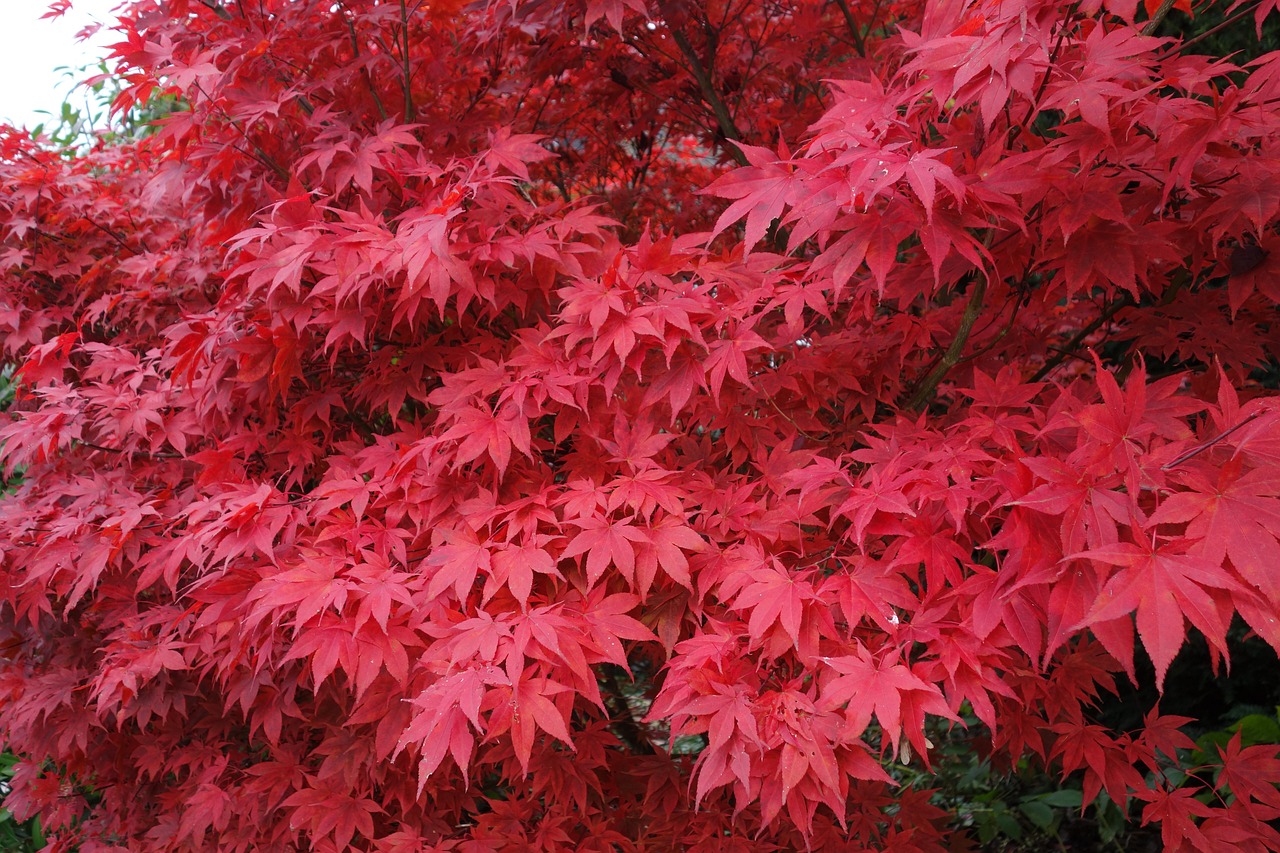Japanese maple trees typically grow at a moderate rate of 1 to 2 feet per year. Their growth can vary based on the specific variety, soil conditions, and climate. These trees are renowned for their brilliant fall colors, which can be influenced by their growth rate and overall health.
Understanding Japanese Maple Trees
Japanese maple trees, scientifically known as Acer palmatum, are beloved for their stunning foliage and graceful structure. They are native to Japan, Korea, and China. These trees are particularly popular in gardens and landscapes due to their ornamental value. Their leaves display a range of colors, particularly in the fall, when they transform into vibrant shades of red, orange, and yellow.

The growth rate of Japanese maple trees is an important factor that affects their overall health and the quality of their fall colors. Several variables influence how quickly these trees grow. These include soil type, moisture levels, sunlight exposure, and the specific cultivar. Understanding these factors can help gardeners cultivate healthier trees that exhibit brilliant autumn hues.
Growth Rate Variability
The growth rates of Japanese maple trees can vary significantly based on their environment and care. Here are some key factors that impact their growth:
- Soil Quality: Well-draining soil rich in organic matter promotes healthy growth.
- Watering: Consistent moisture is essential. However, overwatering can lead to root rot.
- Sunlight: Most varieties prefer partial shade to full sun, which can affect their growth rate.
- Fertilization: Using the right fertilizer can enhance growth and color vibrancy.
Typical Growth Rates
Japanese maples can be categorized into several types based on their growth habits. Understanding these categories helps in selecting the right tree for your garden. Below is a table detailing the average growth rates of some popular Japanese maple cultivars:

| Cultivar | Average Growth Rate (per year) | Expected Height at Maturity |
|---|---|---|
| Bloodgood | 1-2 feet | 15-20 feet |
| Sango Kaku | 1-2 feet | 15-25 feet |
| Shirazz | 1-2 feet | 10-12 feet |
| Crimson Queen | 1-3 feet | 5-10 feet |
The above table illustrates that while most Japanese maples grow at a moderate pace, some cultivars like Crimson Queen can exceed this average under optimal conditions. When selecting a tree, consider not only its growth rate but also the potential height it will reach at maturity.
The Importance of Fall Color
The fall color of a Japanese maple is one of its most attractive features. The intensity and vibrancy of these colors depend on various factors, including the tree’s health and the conditions it was grown in. Healthy trees that experience stress during the growing season (like drought or nutrient deficiency) often produce more vivid fall colors.
In addition to environmental factors, genetic traits inherent to each cultivar play a significant role in coloring. Some varieties are known for their exceptional fall display, showcasing deep reds and bright yellows. This seasonal change is not only beautiful but also indicates the tree’s overall vitality.

To achieve the best fall colors in your Japanese maple, ensure proper care throughout the year. This includes adequate watering during dry spells, applying mulch to retain soil moisture, and providing appropriate fertilization.
Ultimately, understanding the growth rate and care requirements of Japanese maples can lead to stunning fall displays. With attention and care, these trees can transform any landscape into a vibrant autumn wonderland.
Factors Influencing Growth Rate
The growth rate of Japanese maple trees is influenced by a variety of factors. Understanding these aspects can help gardeners optimize conditions for their trees. Here are some key elements to consider:
- Climate: Japanese maples thrive in temperate climates. They prefer areas with distinct seasons, including cold winters and warm summers.
- Soil Composition: A well-draining soil rich in organic matter is ideal. Heavy clay soils can hinder growth and lead to root problems.
- Water Availability: Consistent moisture is crucial. Japanese maples are sensitive to drought and waterlogged conditions.
- Sunlight: While some varieties tolerate full sun, most prefer partial shade, especially during the hottest part of the day.
Soil Requirements
Choosing the right soil is essential for the health and growth of Japanese maple trees. Here are some characteristics of suitable soil:

- pH Level: Japanese maples prefer slightly acidic to neutral pH levels (between 6.0 and 7.0).
- Drainage: The soil must drain well to prevent root rot. Incorporating organic matter can improve drainage.
- Nutrient-Rich: Soils should be rich in nutrients to support healthy growth. Organic amendments, such as compost, can enhance fertility.
Watering Practices
Proper watering is vital for Japanese maples, particularly during their early years. Here’s how to establish an effective watering routine:
- Frequency: Water young trees deeply once or twice a week during dry spells.
- Observation: Check the top inch of the soil; if it feels dry, it’s time to water.
- Mulching: Apply a layer of mulch around the base of the tree. This helps retain moisture and regulates soil temperature.
Sunlight Exposure
The amount of sunlight a Japanese maple receives significantly affects its growth rate and color. Different cultivars have varying sunlight requirements:
| Cultivar | Sunlight Preference | Growth Rate |
|---|---|---|
| Acer palmatum ‘Bloodgood’ | Full sun to partial shade | 1-2 feet |
| Acer palmatum ‘Crimson Queen’ | Partial shade | 1-3 feet |
| Acer palmatum ‘Sango Kaku’ | Partial sun | 1-2 feet |
As shown in the table, while some cultivars can tolerate full sun, others may require protection from intense sunlight to prevent leaf scorch. It’s important to match the cultivar to its preferred light conditions.
Nutritional Needs
Nutrients play a critical role in the overall health and growth of Japanese maples. Regular fertilization helps ensure that trees receive adequate nutrition. Here are some guidelines for feeding:
- Timing: Fertilize in early spring before new growth starts.
- Type of Fertilizer: Use a balanced fertilizer with equal parts nitrogen, phosphorus, and potassium (N-P-K). Organic options like fish emulsion or compost are also beneficial.
- Application: Follow the manufacturer’s instructions for application rates. Over-fertilizing can harm the tree.
Pest and Disease Management
Pest infestations and diseases can impede the growth rate of Japanese maples. Regular monitoring and preventive measures can help maintain tree health. Common pests include aphids and spider mites, while fungal diseases may affect foliage. Here are some management strategies:
- Regular Inspections: Check leaves and stems for signs of pests or disease.
- Natural Predators: Encourage beneficial insects like ladybugs to control pest populations.
- Pesticides: If necessary, use insecticidal soap or neem oil as a less toxic treatment option.
By understanding these factors, gardeners can promote healthy growth rates in their Japanese maple trees, leading to vibrant fall colors that enhance any landscape.
Seasonal Care for Japanese Maples
Providing seasonal care for Japanese maple trees is crucial to ensure optimal growth and stunning fall color. Each season presents unique challenges and opportunities for nurturing these beautiful trees. Here’s a breakdown of care throughout the year:
Spring Care
During spring, Japanese maples emerge from dormancy and begin their growth phase. Here are some essential care tips for spring:
- Pruning: Light pruning can promote healthy growth. Remove dead or damaged branches to encourage new growth.
- Fertilization: Apply a balanced fertilizer to support new leaves and stems. Be cautious not to over-fertilize.
- Watering: As temperatures rise, ensure the soil remains moist but not soggy. Regular watering is essential during dry spells.
Summer Care
Summer is a critical time for Japanese maples as they experience peak growth. Here’s how to care for them during this season:
- Mulching: Apply a layer of organic mulch around the base of the tree. This helps retain moisture and regulates soil temperature.
- Watering Needs: Increase watering frequency if the weather is particularly hot or dry. Check soil moisture regularly.
- Pest Monitoring: Continue to inspect for pests and diseases. Early detection is key to effective management.
Fall Care
As fall approaches, the Japanese maple begins to showcase its vibrant colors. Proper care during this season can enhance its beauty:
- Leaf Cleanup: Rake fallen leaves to prevent fungal diseases. This also keeps the area tidy and allows for better air circulation.
- Watering Adjustment: Reduce watering as temperatures drop and rainfall increases, but ensure the tree receives adequate moisture before winter.
- Preparatory Pruning: After the leaves have fallen, consider light pruning to shape the tree and remove any dead wood.
Winter Care
Winter can be harsh on Japanese maples, especially in colder climates. Here are some tips for winter care:
- Protection from Cold: For young trees, consider wrapping the trunk with burlap or protecting roots with mulch to shield them from extreme cold.
- Irrigation Needs: Ensure the tree has sufficient water before the ground freezes. This helps prevent dehydration during winter.
- Monitoring: Keep an eye out for snow accumulation on branches. Gently brush off heavy snow to prevent limb breakage.
The Role of Temperature in Growth and Color
Temperature plays a significant role in the growth rate and fall color of Japanese maple trees. Both daytime highs and nighttime lows influence how trees respond throughout the seasons.
Temperature Effects on Growth Rate
The growing season is affected by temperature fluctuations. Here’s how temperature impacts growth:
- Warm Days: Higher temperatures in spring can stimulate early bud break and leaf expansion.
- Cool Nights: Cooler nighttime temperatures during late summer and fall enhance color development by increasing sugar concentration in leaves.
- Stress Conditions: Excessive heat can stress trees, leading to slower growth rates and reduced vigor.
Temperature and Fall Color Development
The transition from summer to fall is critical for vibrant leaf colors. Factors include:
- Day Length: Shorter days signal trees to prepare for dormancy, affecting color changes.
- Cooler Temperatures: Nighttime temperatures below 50°F (10°C) can enhance red pigments (anthocyanins) in leaves.
- Drought Stress: Limited water availability during late summer can intensify fall colors by concentrating sugars in leaves.
Selecting the Right Cultivar for Your Climate
Selecting an appropriate cultivar of Japanese maple for your specific climate is essential for optimal growth and vibrant fall color. Different cultivars have varying tolerances to heat, cold, and moisture conditions.
| Cultivar | Hardiness Zone | Color Characteristics |
|---|---|---|
| Acer palmatum ‘Bloodgood’ | 5-8 | Deep red foliage in fall |
| Acer palmatum ‘Atropurpureum’ | 5-8 | Purple-red leaves that turn bright red |
| Acer palmatum ‘Dissectum’ | 5-9 | Lacy leaves that turn vibrant yellow-orange |
| Acer palmatum ‘Sango Kaku’ | 5-8 | Pale yellow-green leaves turning bright red-orange |
This table outlines some popular cultivars along with their hardiness zones and color characteristics, helping gardeners select the best options for their local climate conditions.
Additional Considerations for Japanese Maple Care
When cultivating Japanese maple trees, several additional considerations can enhance their growth and fall performance. By paying attention to these details, gardeners can create an environment that supports healthy trees and vibrant autumn colors.
Companion Planting
Choosing the right plants to accompany Japanese maples can benefit both aesthetics and health. Consider these companion plants:
- Acorus gramineus (Japanese Sweet Flag): This plant thrives in similar conditions and adds texture to the garden.
- Hostas: These shade-loving perennials complement the delicate leaves of Japanese maples.
- Ferns: Various ferns provide a lush underplanting that works well in shaded areas.
Seasonal Interest
While fall color is a highlight, many Japanese maples offer visual interest throughout the year. Here are some aspects to appreciate in each season:
- Spring: Fresh green leaves unfurl, often with a reddish hue on some cultivars.
- Summer: Foliage provides shade and a cooling effect in gardens, with some trees displaying vibrant green leaves.
- Winter: The structure of the tree becomes more visible, showcasing its unique branching patterns and bark textures.
Cultivar Selection and Availability
When selecting a Japanese maple cultivar, consider the availability and characteristics of each option. Local nurseries often provide a range of cultivars suited to specific climates. Additionally, some online retailers specialize in rare and unique varieties, making it easier to find the perfect match for your landscape.
Before purchasing, check for healthy specimens. Look for vibrant leaf color, strong branching, and an overall well-formed structure. Avoid trees with signs of disease or damage.
Final Thoughts
The Japanese maple is a stunning addition to any garden, celebrated for its beauty and seasonal transformation. Understanding its growth rate and the factors that influence its development can help gardeners cultivate trees that thrive and display breathtaking fall colors.
Key takeaways include the importance of proper care, including soil quality, watering practices, and pest management. Selecting the right cultivar for your specific climate is essential for ensuring a successful growth experience. Additionally, considering seasonal changes and companion planting can further enhance your garden’s aesthetic appeal.
With attentive care throughout the year, Japanese maple trees not only grow at a healthy rate but also offer spectacular fall displays that captivate all who encounter them. Whether you are a seasoned gardener or just starting, these trees provide an incredible opportunity to connect with nature through their beauty and elegance.
By integrating this knowledge into your gardening practice, you can enjoy the stunning colors of Japanese maples each autumn while fostering healthy growth year-round. Embrace the journey of nurturing these remarkable trees, and watch as they transform your landscape into a vibrant tapestry of colors each fall.
